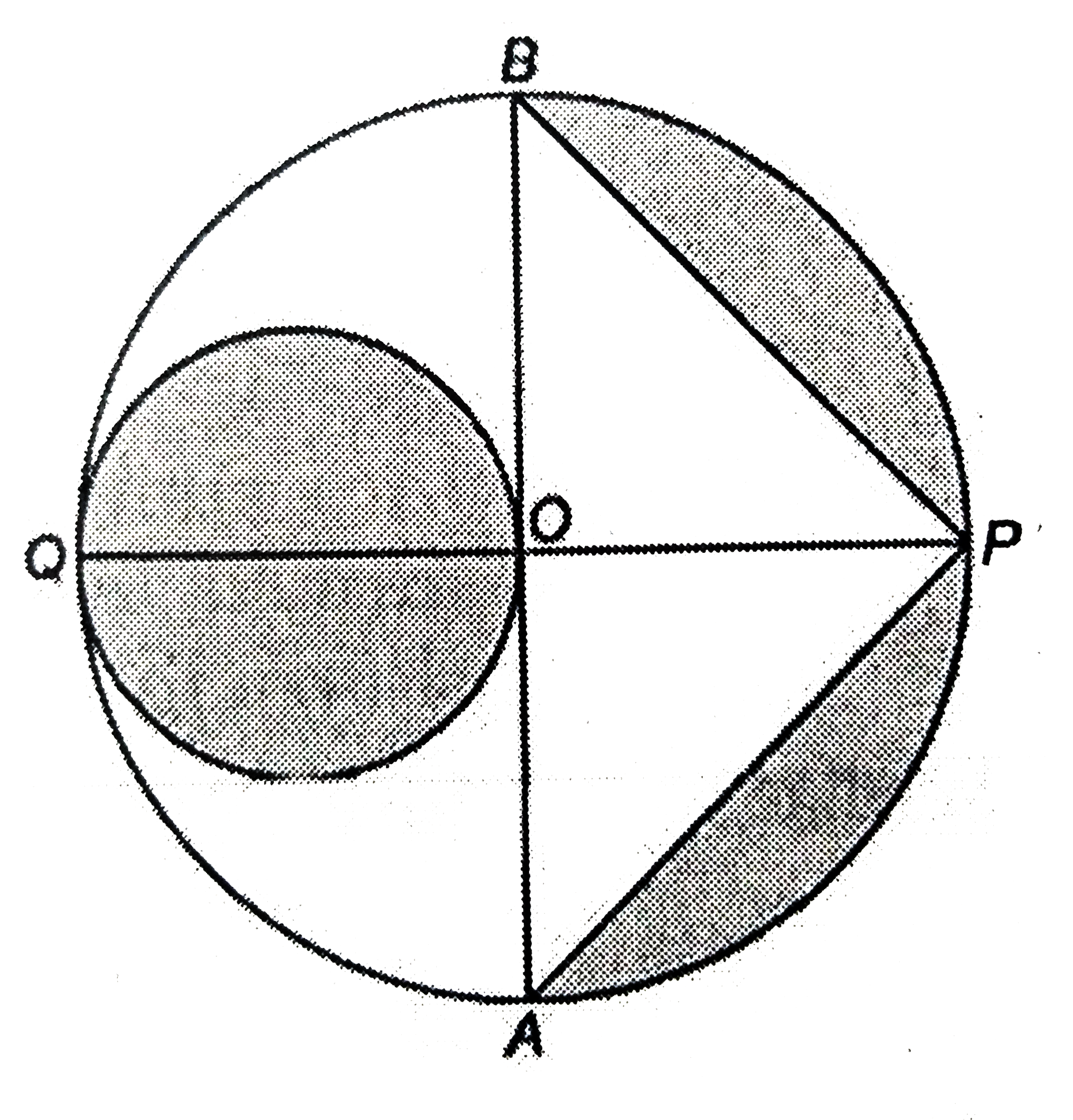AB is a vertical diameter of a circle, whose plane is vertical and PQ is a diameter inclined at an angle θ to AB. If the time of sliding down PQ be twice that of sliding down AB, then cosθ=
12
13
14
None
The correct Answer is:C
To solve the problem, we need to analyze the motion of a particle sliding down two different diameters of a circle: AB (vertical) and PQ (inclined at an angle θ to AB). The key information given is that the time taken to slide down PQ is twice that of sliding down AB.
1. Identify the Distances:
- Let the length of the diameter AB be d.
- The distance traveled along AB is d.
- The distance traveled along PQ can be expressed as dcosθ since PQ is inclined at an angle θ.
2. Use the Equation of Motion:
- For the vertical diameter AB, the distance traveled d can be described by the equation of motion:
d=12gT21
where g is the acceleration due to gravity and T1 is the time taken to slide down AB.
3. For the Inclined Diameter PQ:
- The distance traveled along PQ can be described as:
dcosθ=12(gcosθ)T22
where T2 is the time taken to slide down PQ.
4. Relate the Times:
- Given that T2=2T1, we can substitute T2 in the equation:
dcosθ=12(gcosθ)(2T1)2
- This simplifies to:
dcosθ=12(gcosθ)(4T21)
- Further simplifying gives:
dcosθ=2gcosθT21
5. Equate the Two Expressions:
- From the first equation for AB, we have:
d=12gT21
- Substitute d from this equation into the equation for PQ:
12gT21cosθ=2gcosθT21
6. Cancel Common Terms:
- We can cancel gcosθT21 from both sides (assuming gcosθT21≠0):
12=2
- This implies:
12=2cosθ
7. Solve for cosθ:
- Rearranging gives:
cosθ=14
Final Answer:
cosθ=14
- Let the length of the diameter AB be d.
- The distance traveled along AB is d.
- The distance traveled along PQ can be expressed as dcosθ since PQ is inclined at an angle θ.
- For the vertical diameter AB, the distance traveled d can be described by the equation of motion:
d=12gT21
where g is the acceleration due to gravity and T1 is the time taken to slide down AB.
- The distance traveled along PQ can be described as:
dcosθ=12(gcosθ)T22
where T2 is the time taken to slide down PQ.
- Given that T2=2T1, we can substitute T2 in the equation:
dcosθ=12(gcosθ)(2T1)2
- This simplifies to:
dcosθ=12(gcosθ)(4T21)
- Further simplifying gives:
dcosθ=2gcosθT21
- From the first equation for AB, we have:
d=12gT21
- Substitute d from this equation into the equation for PQ:
12gT21cosθ=2gcosθT21
- We can cancel gcosθT21 from both sides (assuming gcosθT21≠0):
12=2
- This implies:
12=2cosθ
- Rearranging gives:
cosθ=14
cosθ=14
Similar Questions
Knowledge Check
AB is the vertical diameter of a circle in a vertical plane. Another diameter CD makes an angle of 60∘ with AB, then the ratio of the time taken by a particle to slide along AB to the time taken by it to slide along CD is
A1:1B√2:1C1:√2D31/4:21/4AB is a diameter of circle with centre O. PQ is a chord which do not cut AB. If AP and BQ are joined. If ∠BAP=∠ABQ then ABQP is-
Acyclic squareBcyclic trapeziumCcyclic rhombusDcyclic rectangleA simple pendulum is set up on a trolley which slides down a frictionless inclined plane making an angle θ with horizontal. The time period of pendulum is
A2π√lgB2π√lcosthtagC2π√lgcosθD2π√lg(1−cosθ)
AB is a diameter of circle with centre O. PQ is a chord which do not cut AB. If AP and BQ are joined. If ∠BAP=∠ABQ then ABQP is-
View SolutionPQ is a tangent at a point C to a circle with centre O if AB is a diameter and angle CAB=30∘, find angle PCA.
View SolutionIn the given figure, AB and PQ are perpendicular diameters of the circle whose centre is O and radius OA = 7 cm. Find the area of the shade region.

View SolutionIn 2, PQ is a tangent at a point C to circle with centre O. If AB is a diameter and ∠CAB=30∘ then find ∠PCA.

View SolutionA particle slides from rest from the topmost point of a vertical circle of radius r along a smooth chord making an angle θ with the vertical. The time of descent is .
View Solution